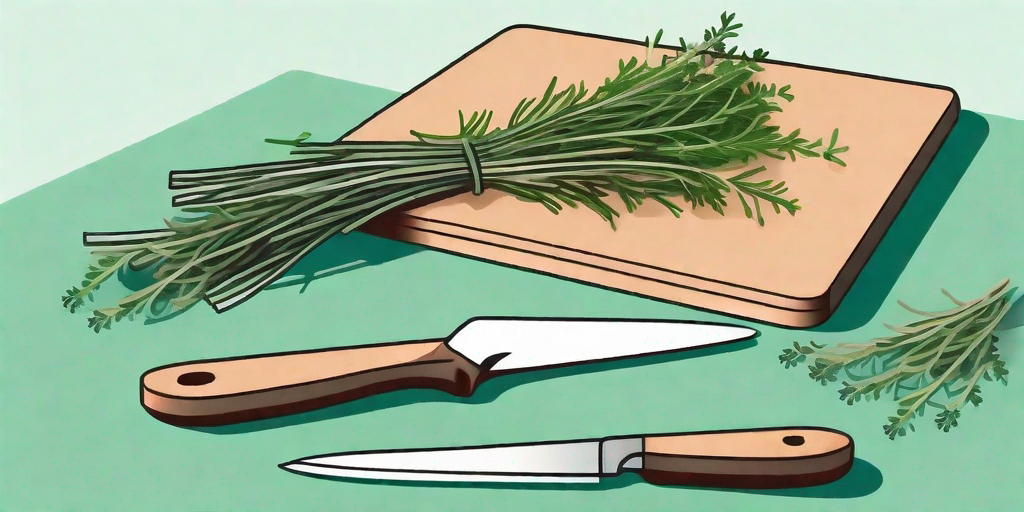
Welcome to the world of culinary herbs, where the humble thyme holds a place of honor. This versatile herb, with its subtle, earthy flavor, can transform a simple dish into a gourmet delight. But, the secret to unlocking its full potential lies in the art of trimming. So, let's dive into the thyme-trimming journey and spice up your cooking game!
The Thymeless Tale of Thyme
Before we delve into the nitty-gritty of trimming thyme, let's take a moment to appreciate its rich history. Thyme, a member of the mint family, has been a culinary and medicinal staple since ancient times. The Egyptians used it for embalming, the Greeks burned it as incense, and the Romans savored it in their food and beverages. Even today, it continues to be a favorite in kitchens around the world.
Thyme's popularity stems not only from its distinctive flavor but also from its health benefits. It's packed with vitamins A and C, and it's a good source of copper, fiber, iron, and manganese. So, when you're trimming thyme, remember, you're not just enhancing flavor; you're also boosting your health!
Choosing and Storing Thyme
Before you can trim thyme, you need to choose the right sprigs. Look for fresh thyme with vibrant green leaves and a strong, aromatic scent. Avoid those with brown spots or a wilted appearance. Remember, the fresher the thyme, the better the flavor.
Once you've chosen your thyme, it's time to store it. Wrap the thyme sprigs loosely in a damp paper towel and place them in a plastic bag in the refrigerator. They should last for up to two weeks. But, for the best flavor, use them as soon as possible.
The Art of Trimming Thyme
Now, we've arrived at the heart of our thyme journey - trimming. Trimming thyme may seem daunting at first, but with a little practice, you'll be a pro in no time. Here's a step-by-step guide to help you master the art.
Step 1: Hold the Thyme Sprig at the Top
Hold the thyme sprig at the top, where the leaves are youngest and most tender. This will give you the best grip and make the trimming process easier.
Remember, the top of the sprig is where the newest growth occurs, so these leaves will have the most flavor. Don't waste them!
Step 2: Strip the Leaves
Using your other hand, gently strip the leaves from the stem, starting from the top and moving downwards. The leaves should come off easily. If they don't, you're probably moving in the wrong direction.
Be careful not to strip too hard, or you might end up with a handful of stems. The goal is to get as many leaves as possible, with as few stems as possible.
Step 3: Chop the Leaves (Optional)
If your recipe calls for chopped thyme, now's the time to chop. Use a sharp knife and a chopping board to finely chop the leaves. But, if your recipe calls for whole thyme leaves, you can skip this step.
Remember, chopping releases the oils in the thyme leaves, enhancing their flavor. So, don't chop until you're ready to use the thyme.
Common Thyme Trimming Mistakes
Even seasoned cooks can make mistakes when trimming thyme. Here are a few common ones to avoid.
Mistake 1: Trimming Thyme When It's Wet
Trimming thyme when it's wet can lead to bruised leaves and a loss of flavor. Always make sure your thyme is dry before you start trimming.
Remember, water can also cause the thyme leaves to stick together, making them harder to trim. So, dry thyme is the way to go.
Mistake 2: Using Dull Knives
Using a dull knife to chop thyme can bruise the leaves and lead to a loss of flavor. Always use a sharp knife for the best results.
Remember, a sharp knife also makes the chopping process easier and safer. So, keep those knives sharp!
FAQs
Can I use dried thyme instead of fresh?
Yes, you can use dried thyme instead of fresh. However, dried thyme has a more concentrated flavor, so use about a third of the amount of fresh thyme called for in the recipe.
Can I freeze thyme?
Yes, you can freeze thyme. Simply place the whole sprigs in a freezer bag and freeze. You can then strip the leaves from the stems while they're still frozen and use them as needed.
Can I use the stems of thyme?
Yes, you can use the stems of thyme in stocks, soups, and stews for extra flavor. However, the stems are woody and not pleasant to eat, so remove them before serving.
Conclusion
Trimming thyme is an art that can elevate your cooking to new heights. With a little practice, you can master this skill and unlock the full potential of this versatile herb. So, go ahead, spice up your cooking game with perfectly trimmed thyme!
And remember, in the world of culinary herbs, thyme waits for no one. So, don't waste any more time. Start trimming!











